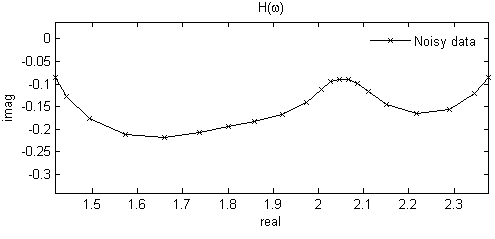Mu-Hsin Wei, Waymond Scott, James McClellan
Georgia Institute of Technology, School of ECE
Georgia Institute of Technology, School of ECE
This webpage provides code and examples for estimating the discrete spectrum of relaxations from frequency domain signals.
Problem Statement

Estimation Methods
Two effective DSRF estimation methods have been proposed by our group:
- The nonnegative least-squares (NNLSQ) approach:
If all the spectral amplitudes are of the same sign (e.g. all nonnegative), the DSRF can be robustly estimated by solving a nonnegative least-squares problem. This method is described in:“Robust estimation of the discrete spectrum of relaxations for electromagnetic induction responses,” IEEE Trans. Geosci. Remote Sens., volume 48, issue 3, Mar 2010. - The Lp minimization approach:
The general case where the spectral amplitudes have mixed signs, the DSRF can be estimated by solving an Lp-regularized least-squares for 0<=p<=1. This method is described in:“Application of Lp-regularized least squares for 0 <= p <= 1 in estimating discrete spectrum models from sparse frequency measurements,“ Proc. ICASSP, 2010.
Code
This section contains MATLAB code of the estimation methods and some
examples.
- DSRF.zip – implementation of the NNLSQ and Lp method
- DSRF_lab.zip – examples of estimating DSRF from laboratory EMI responses
Additional packages maybe required: l1_ls, CVX, and EMD.
Example
Given the frequency response (Fig. 1), we estimate its DSRF using the NNLSQ approach (Fig. 2). (See “DSRF_example.m” in DSRF.zip.)


For comments or questions please contact Mu-Hsin Wei (m.wei@gatech.edu)

